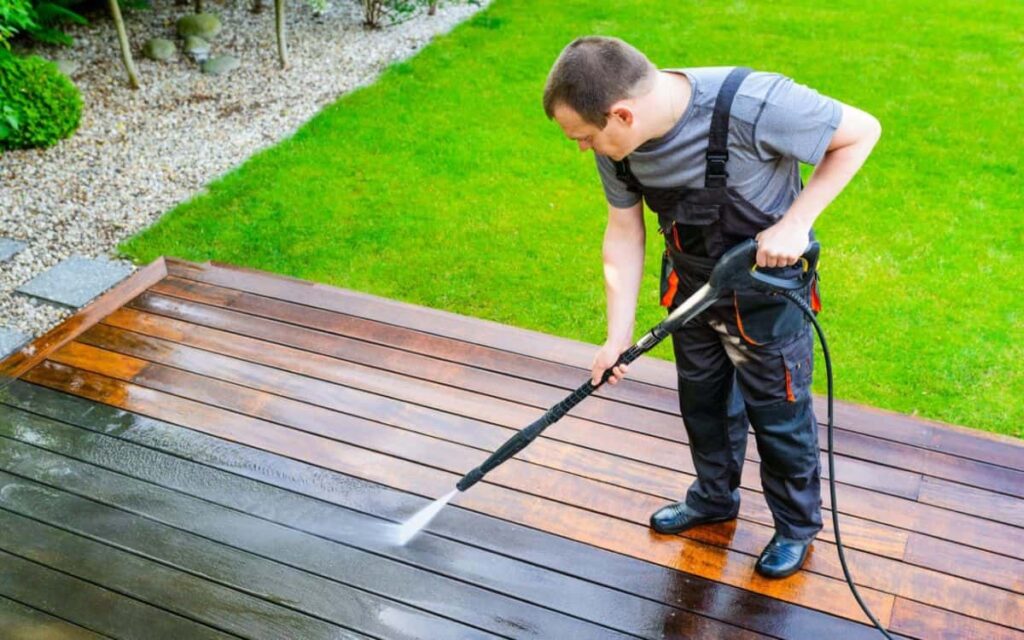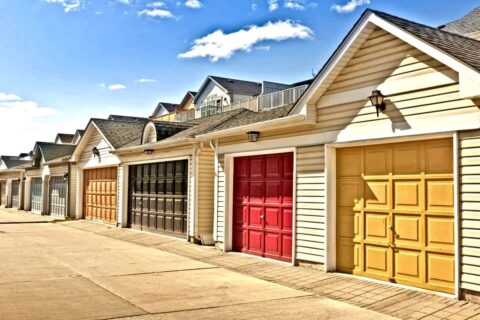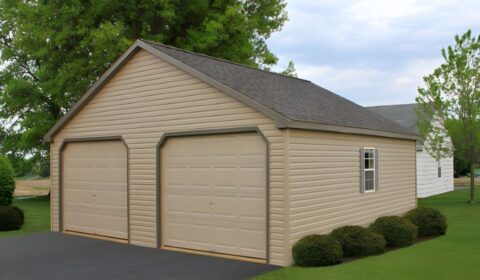Fastest Way to Remove Algae from Decking
The quickest method is pressure washing, which efficiently removes algae in minutes. Use white vinegar or soapy water with a stiff brush for a chemical-free alternative. Commercial algae removers also work rapidly. Keep the deck clean, dry, and well-exposed to sunlight to prevent regrowth.
Algae growth on decking can be both unsightly and hazardous. It creates a slippery surface that poses a safety risk and diminishes the aesthetic appeal of your outdoor space. Whether you have wooden, composite, or plastic decking, removing algae quickly and effectively is essential. But what is the fastest way to remove algae from decking? This guide will explore various methods, including natural solutions, chemical treatments, and preventative measures to ensure your decking remains clean and safe all year round.
Understanding Algae Growth on Decking
Algae thrive in damp, shaded areas where moisture is retained. They feed on organic matter, such as fallen leaves, dirt, and other debris. Decking materials that are not regularly cleaned can quickly develop algae, especially in the UK, where frequent rain and humidity create the perfect environment for their growth.
Fastest Ways to Remove Algae from Decking
Using a Pressure Washer
A pressure washer is one of the quickest and most efficient ways to remove algae from decking. This method is particularly effective for stubborn algae that have formed a thick layer.
Steps:
- Clear the deck of any furniture or obstacles.
- Sweep away loose debris and leaves.
- Set the pressure washer to a medium setting (too high can damage wooden decking).
- Spray the deck in even strokes, ensuring the water stream lifts the algae.
- Allow the deck to dry completely before use.
Pros:
- Fast and efficient.
- No chemicals are needed.
- Removes dirt and grime along with algae.
Cons:
- It can damage wood if the pressure is too high.
- It may require sealing after use.
Must Read: How to Remove Mould from Wood?
Scrubbing with Soapy Water and a Stiff Brush
If you do not have a pressure washer or prefer a less intense method, using warm, soapy water with a stiff brush is a great alternative.
Steps:
- Mix warm water with a mild detergent or washing-up liquid.
- Use a stiff-bristled brush to scrub the algae-covered areas.
- Rinse with clean water.
- Repeat if necessary.
Pros:
- Gentle on decking materials.
- No harsh chemicals are required.
Cons:
- Requires physical effort.
- It might take longer than pressure washing.
Applying White Vinegar Solution
White vinegar is a natural and effective way to remove algae without harming the environment.
Steps:
- Mix equal parts white vinegar and water in a spray bottle.
- Spray the solution directly onto the algae-covered areas.
- Let it sit for 15–30 minutes.
- Scrub with a stiff brush.
- Rinse with clean water.
Pros:
- Eco-friendly and non-toxic.
- Effective against mild to moderate algae growth.
Cons:
- It might not work instantly for severe algae buildup.
- Needs scrubbing for best results.
Using Commercial Algae Removers
Several specialised algae removers are available on the market that work quickly and efficiently. Look for a product that is safe for your specific decking material.
Steps:
- Read the manufacturer’s instructions carefully.
- Apply the solution as directed.
- Allow it to sit for the recommended time.
- Rinse with water or scrub if necessary.
Pros:
- Specially formulated for algae removal.
- Works faster than some DIY methods.
Cons:
- Some products contain harsh chemicals.
- It may require multiple applications for stubborn algae.
Baking Soda and Water Paste
For a natural and gentle solution, baking soda can tackle algae.
Steps:
- Mix baking soda with a little water to create a paste.
- Apply the paste to the affected areas.
- Scrub with a brush.
- Rinse thoroughly.
Pros:
- Safe for pets and children.
- Helps deodorise and clean decking.
Cons:
- It may require multiple applications.
- Less effective for extensive algae growth.
Preventing Algae Growth on Decking
Once you have removed the algae, it’s important to take steps to prevent its return. Here are some effective preventive measures:
Regular Cleaning
Sweeping and washing your decking regularly can prevent dirt buildup, contributing to algae growth.
Improve Drainage
Ensure water does not pool on your deck by fixing drainage issues and clearing gutters.
Increase Sunlight Exposure
Trimming overhanging branches and repositioning furniture to allow more sunlight onto your decking can help prevent algae from thriving.
Apply a Decking Sealant
A good quality sealant can protect the decking from moisture, reducing the chances of algae formation.
Use Anti-Algae Treatments
Periodic application of an anti-algae treatment can keep your deck clear of unwanted growth.
Conclusion
The fastest way to remove algae from decking depends on the severity of the growth and the materials used. Pressure washing offers a quick solution for large areas, while vinegar, baking soda, and soapy water are excellent natural alternatives. Regular maintenance and preventive measures will ensure your decking remains algae-free, safe, and visually appealing throughout the year. Adopting these effective techniques allows you to keep your outdoor space pristine with minimal effort.
Read More Blogs At: The Home Designers
Frequently Asked Questions
How often should I clean my decking to prevent algae growth?
Cleaning at least once a month, especially in damp seasons, can help prevent algae buildup.
Will algae damage my decking over time?
Yes. Algae can retain moisture, leading to decay and weakening of wooden decking. It can also cause staining on composite materials.
Is pressure washing safe for all types of decking?
No. While pressure washing is effective, it can damage softer wood if set to high pressure. Always use a medium setting and test on a small area first.
Can I prevent algae growth naturally?
Yes. Keeping your decking dry, sweeping regularly, and using natural remedies like vinegar or baking soda can help prevent algae growth without chemicals.





